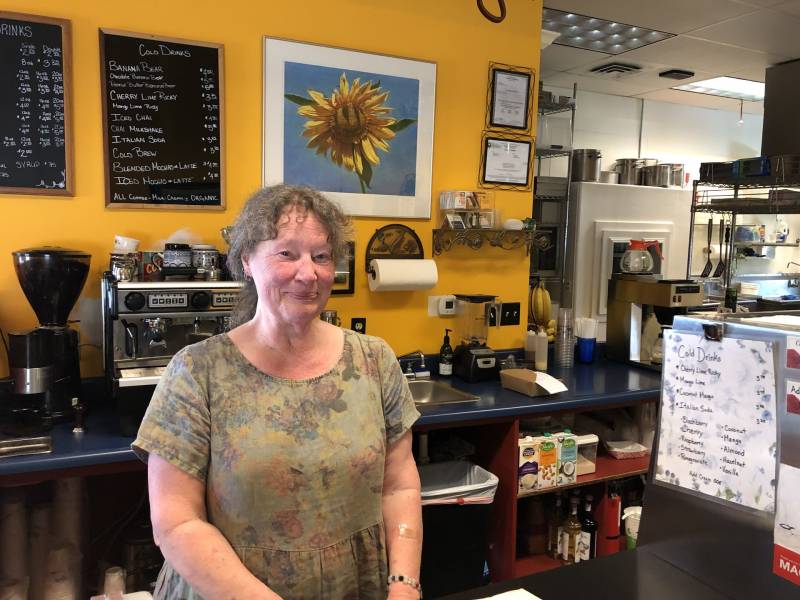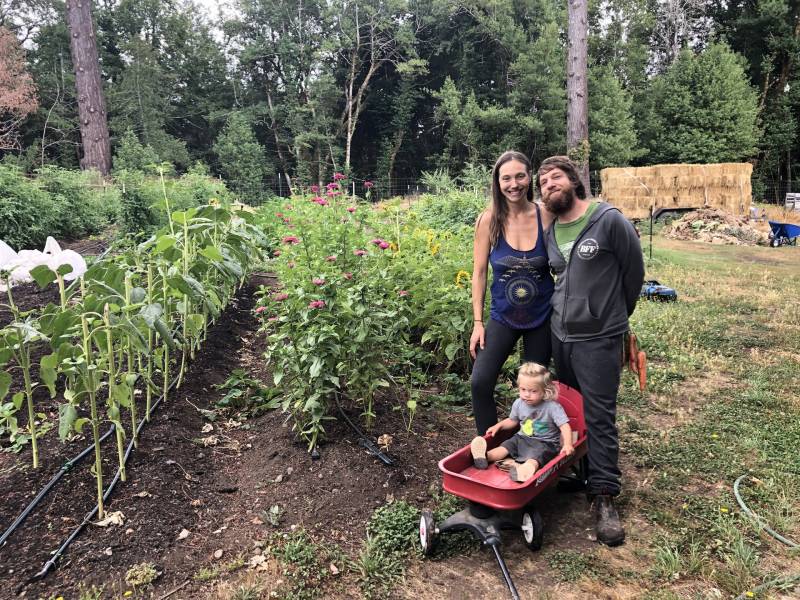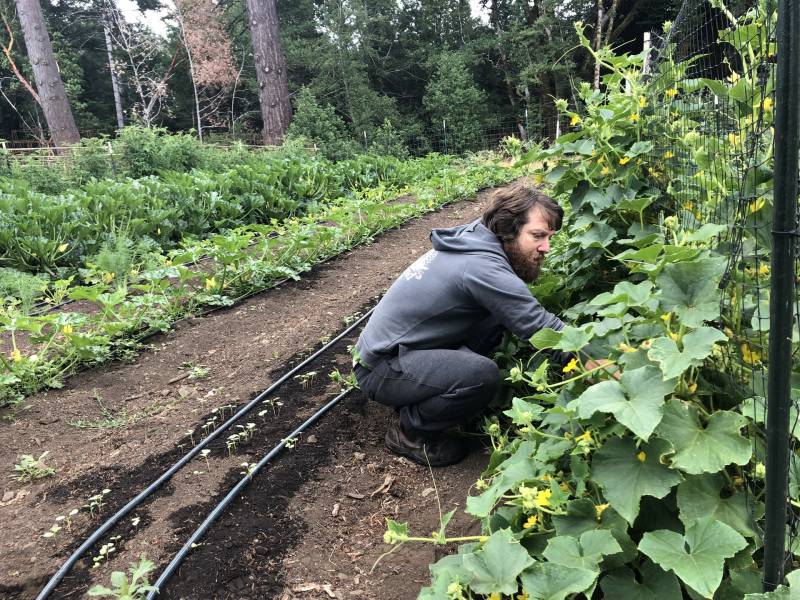Like so many people in southern Humboldt County, Beth Allen has her feet in two worlds. She and her husband started Amillias, a take-out counter and brunch restaurant, 17 years ago in the town of Garberville, but she’s grown cannabis more than twice that long.
When I first reported on marijuana in this part of California almost a decade ago, the price of cannabis was higher than it is now, and I saw small businesses thriving. When I drove the commercial strip of Garberville late this past summer, I saw boarded up storefronts and closed businesses. The whole place looks like it could use a coat of paint.
Allen remembers the 1980s, when law enforcement came down hard on growers, sending helicopters into the remote hills.
“We were protesting and not moving out of the way so the helicopters could land,” she recalled. “You see all of the rivets under the belly of that helicopter.”
Forty years ago, a pound of marijuana could fetch over $5,000. On previous visits I learned that growers funded the construction of non-profit clinics and community centers, and they also had money to spend on higher-end restaurants and specialty foods unusual in a small, rural community.
Amillias catered to that crowd, with its focus on regional ingredients and the personal stories behind their food. Take their pork products: Allen and her husband have known their pig farmer for nearly two decades.
“He drives to Eureka with a trailer, gets whatever's left over from the Booth Brewing Company and his pigs are raised on marijuana and beer,” she said.

Allen has ridden the waves of change in the cannabis industry — from the legalization of medical marijuana to influxes of get-rich-quick growers. In recent years, she advocated for full legalization, and when that became a reality, she tried getting her property through the permitting process in 2017.
“I would show up at the planning department with a box of pastries, a big smile on my face, saying ‘How can we help you get us through this process?’ ” Allen said.
But she found it so frustrating and expensive, she gave up on trying to get a permit for growing legal marijuana. One legalization expert said it can cost a grower $125,000 to get licensed.


